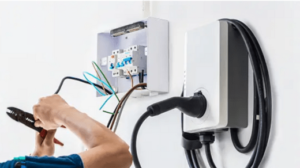how to build a horse walker
Building a horse walker, also known as a horse exerciser or horse treadmill, requires careful planning, construction, and consideration of the safety and well-being of the horses. Here’s a general guide to help you build a horse walker:
**1. Design and Planning:
- Work with an equine professional or an equine architect to design a safe and efficient horse walker. Consider the size, number of horses it will accommodate, diameter, speed, and the number of arms or stalls needed.
2. Gather Materials and Tools:
- Purchase the necessary materials for the frame, arms, control system, footing, and safety features. Common materials include steel for the frame, concrete for the base, and appropriate footing materials.
3. Prepare the Site:
- Clear the area where you plan to build the horse walker. Ensure it’s a flat, well-drained location. Dig trenches for the concrete footings and set the anchor points for the frame.
4. Construct the Frame:
- Build the frame using sturdy steel beams. Weld the beams together to form the circular structure for the horse walker. Make sure the frame is level and securely anchored to the footings.
5. Install the Control System:
- Install the control system, which includes the motor, gears, belts, and the control panel. Ensure that the system is properly connected and calibrated to control the speed and direction of the horse walker.
6. Create the Arms and Stalls:
- Attach the arms to the frame, ensuring they are evenly spaced and securely connected. Each arm should have a stall for a horse. Install appropriate fencing or walls for safety and to prevent the horse from stepping off.
7. Add the Footing:
- Cover the surface within the stalls with appropriate footing material, such as rubber, sand, or another suitable surface. The footing should provide good traction and be easy on the horse’s joints.
8. Install Safety Features:
- Include safety features like emergency stops, non-slip flooring, and fencing at a safe height to prevent the horse from escaping or getting injured.
9. Test the Horse Walker:
- Test the horse walker to ensure it operates smoothly, at the desired speed, and in the correct direction. Check all safety features to ensure they function as intended.
10. Final Adjustments and Inspection: – Make any necessary adjustments based on the test results. Have the horse walker inspected by a professional to ensure it meets safety and functionality standards.
11. Regular Maintenance: – Establish a regular maintenance schedule to ensure the horse walker remains safe and functional. This may include lubricating moving parts, checking electrical connections, and inspecting the structure.
Remember, safety is paramount when building a horse walker. If you are not experienced in construction or equine equipment, consider consulting with professionals to ensure the horse walker is built to industry standards and is safe for the horses.








